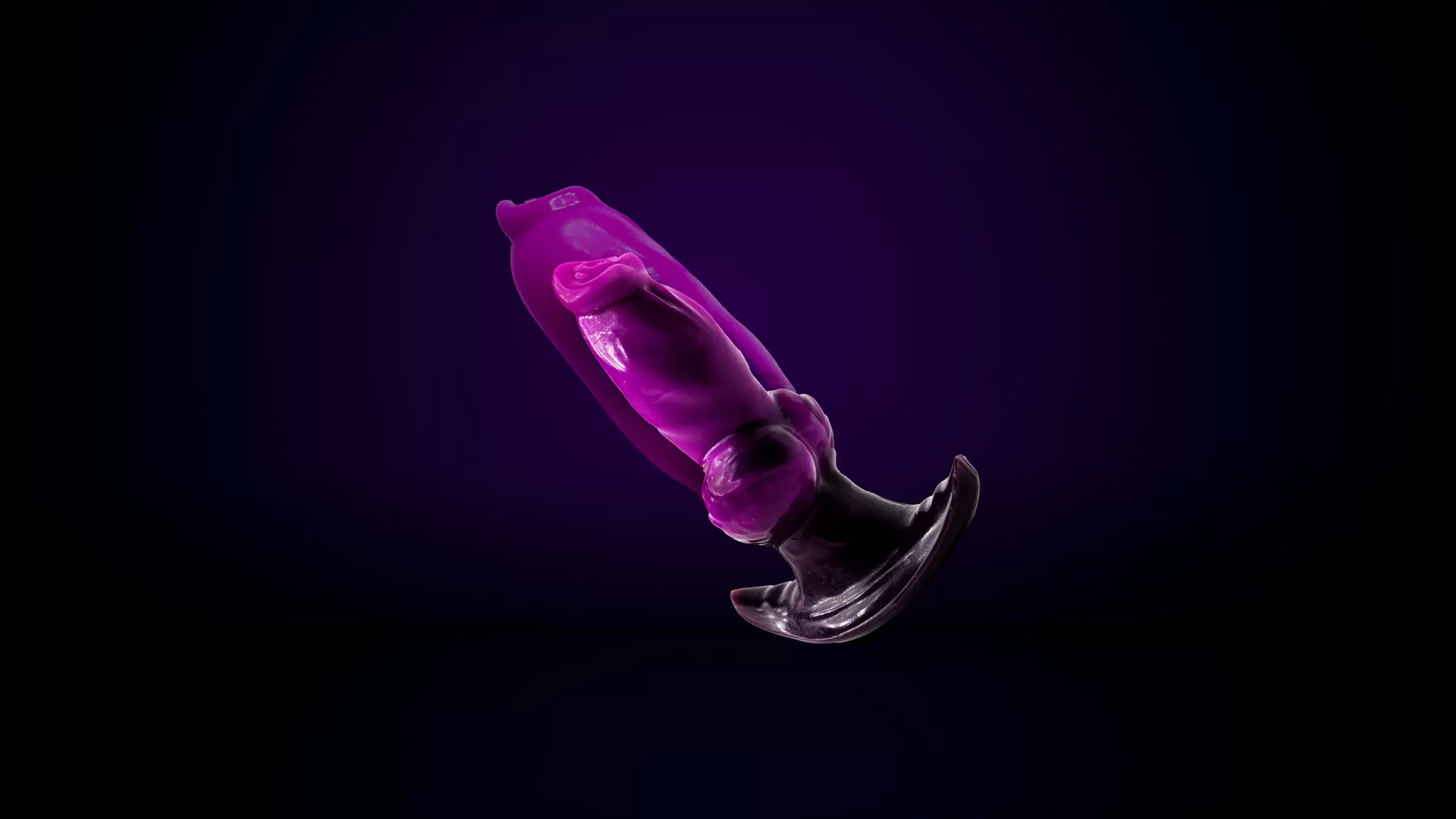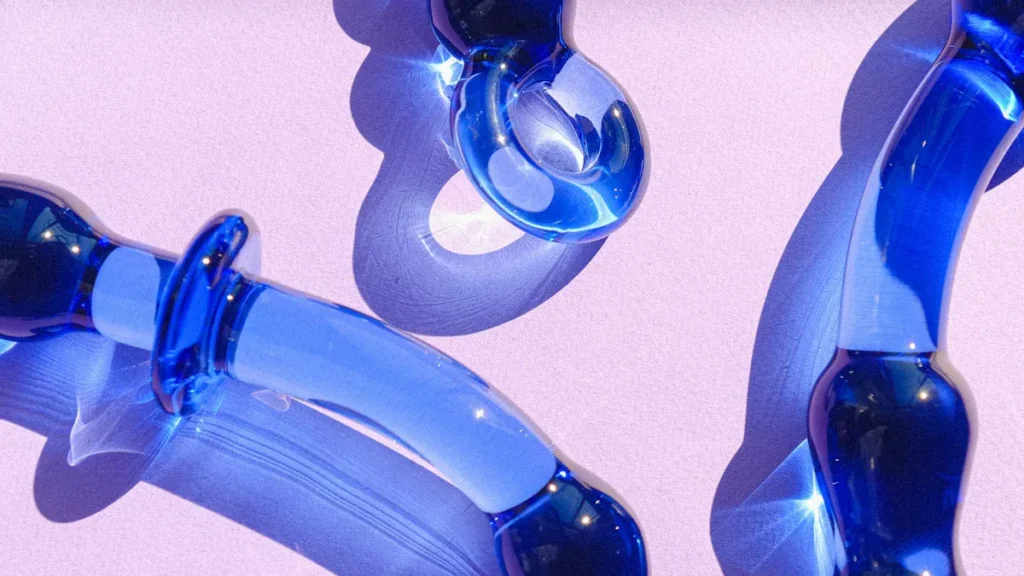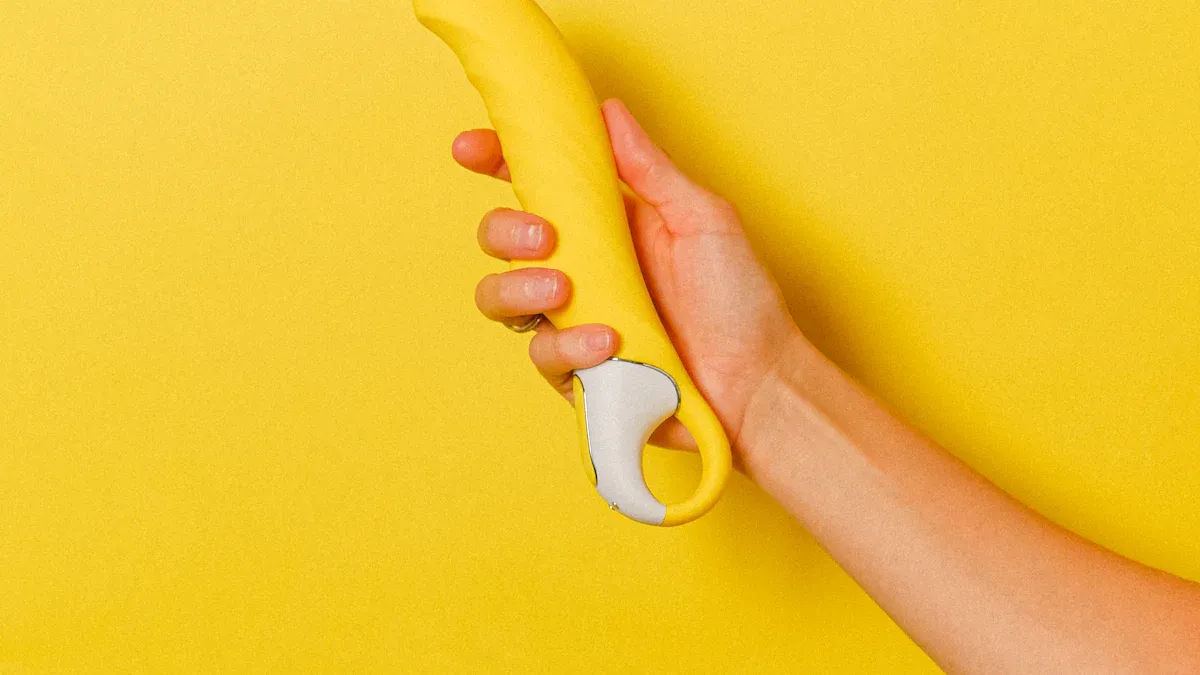Exploring the Materials Behind Clear Dildos
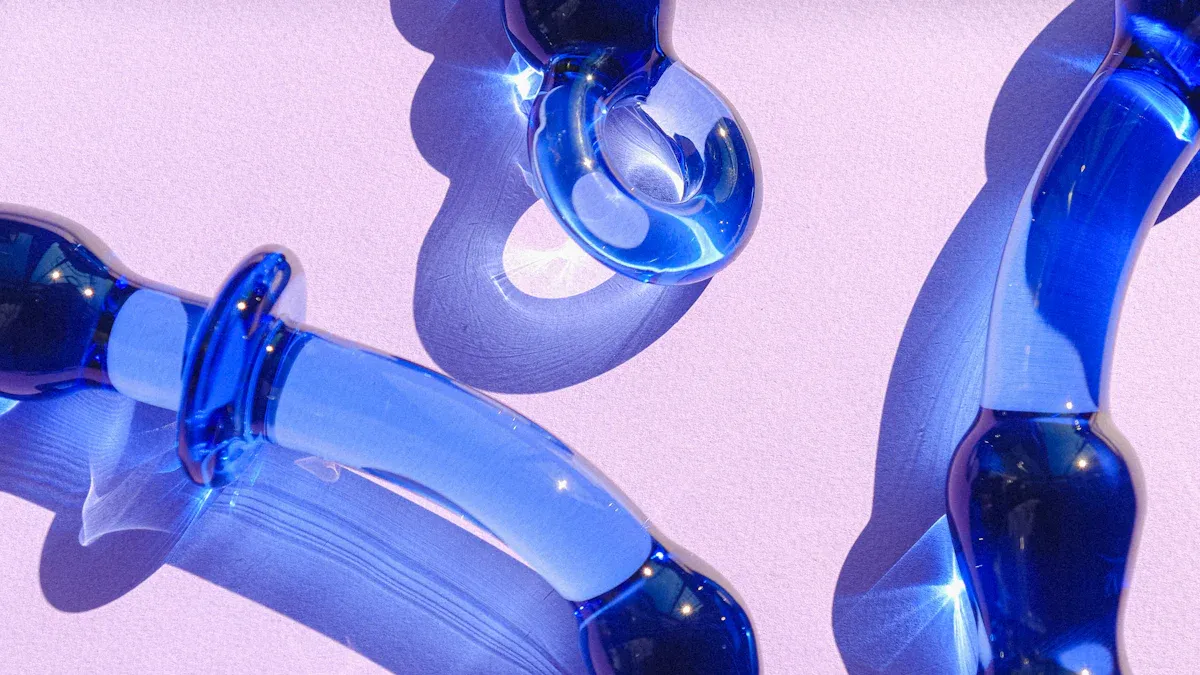
Clear dildos are made from different materials, each with pros and cons. Medical-grade silicone is soft, strong, and non-porous, so it’s safe. Borosilicate glass is easy to clean and works for temperature play. ABS plastic and hard plastic are cheaper but still safe to use. Unique designs, like Dog Dildos or Dinosaur Dildos, are creative but need safe materials. For Dildos For Men, pick non-toxic and durable ones for comfort and safety.
Common Materials in Clear Dildos
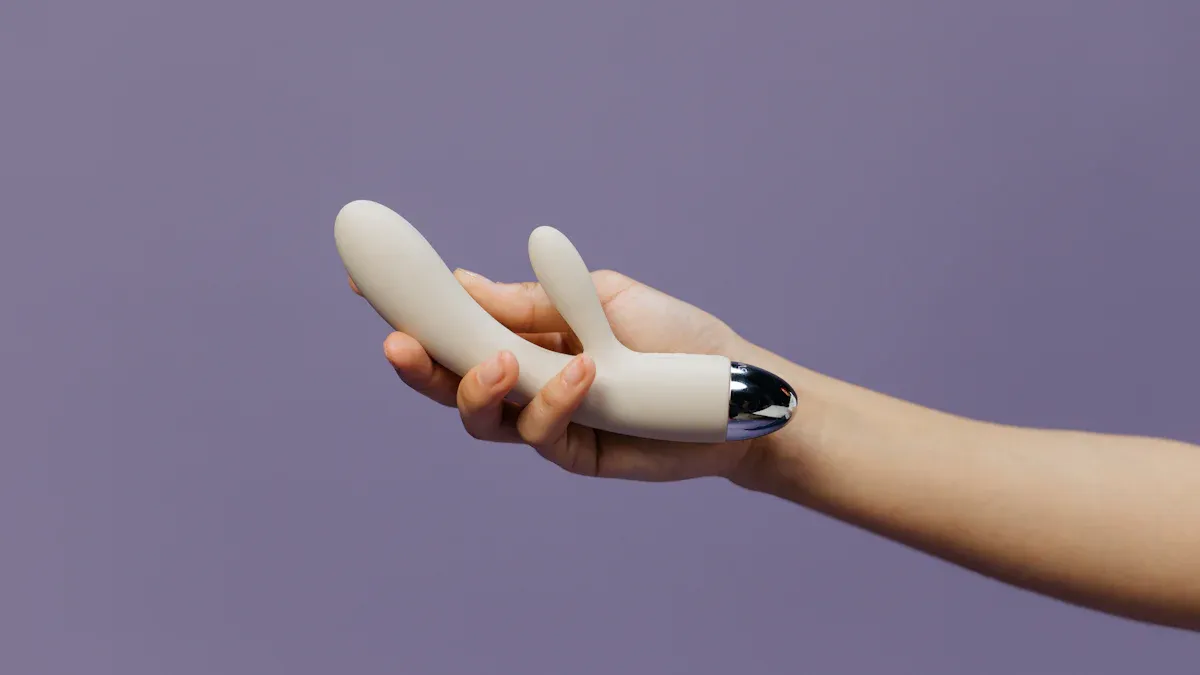
Choosing clear dildos means knowing the materials for safety and comfort. Different materials have their own benefits and risks. Below are the most common ones used in clear dildos.
Silicone: Safe and Reliable
Silicone is one of the safest materials for clear dildos. Body-safe silicone, like medical-grade or food-grade, is highly recommended. It doesn’t absorb germs or dirt, making it easy to clean.
Medical-grade silicone doesn’t release harmful chemicals or break down over time.
It’s tested for human use, making it a safe choice.
Food-grade silicone is cheaper but still durable and safe.
Medical-grade silicone is less toxic than soft plastics. Experts suggest using condoms with lower-quality toys to avoid chemicals.
If safety is your priority, silicone is a great option. Its soft feel and flexibility also make it comfortable to use.
Borosilicate Glass: Clean and Durable
Borosilicate glass is another top material for clear dildos. It doesn’t absorb dirt, oils, or lubricants, making it very hygienic.
Borosilicate glass is hypoallergenic and good for people allergic to plastic or latex. You can clean it with soap, boil it, or even use a dishwasher.
This glass is strong and handles extreme temperatures, perfect for temperature play. Its smooth surface adds comfort. If you want something safe and easy to maintain, borosilicate glass is a smart choice.
Acrylic and Plastic: Cheap but Risky
Acrylic and plastic are popular because they cost less. Acrylic, also called Lucite, is strong and doesn’t absorb bacteria, making it safer than some plastics.
Lucite is better than cheaper plastics because it’s non-porous.
Low-quality plastics may have harmful chemicals that can be unsafe.
Balancing cost and safety is important when choosing materials.
Acrylic is a good budget option, but avoid unsafe plastics without safety certifications. Always pick body-safe materials to protect your health.
PVC and Jelly: Unsafe Choices
PVC and jelly are bad materials for clear dildos. They are cheap and flexible but come with serious safety problems. Knowing these risks helps you make safer choices.
PVC and jelly have tiny holes that trap germs and dirt. Cleaning them well is very hard. This can cause infections and hygiene problems over time.
Another issue is phthalates, chemicals added to make PVC softer. Phthalates can harm your health in many ways.
Phthalates make PVC flexible and last longer.
Studies show phthalates may hurt unborn babies and the nervous system.
Experts say to avoid PVC and jelly completely. They may cost less, but the health risks are not worth it. Choose safer materials like silicone or borosilicate glass instead. These are non-toxic, easy to clean, and last longer.
Tip: Look for toys labeled as phthalate-free and body-safe. If the label doesn’t say this, don’t buy it.
Safety Tips for Clear Dildos
Porosity and Cleanliness
Porous materials soak up germs and dirt easily. Non-porous ones, like medical-grade silicone and borosilicate glass, are safer. They don’t trap bacteria, so cleaning them is simple. Materials like jelly or PVC hold germs even after cleaning. This can lead to infections and harm your health.
Using safe materials helps keep toys clean. For example, silicone resists germs and is easy to wash. You can clean it with soap or toy cleaner for reuse. Porous materials need extra care, like using a condom, to stay safer. But even with care, they may not last long safely.
Tip: Pick non-toxic toys made from medical-grade silicone or borosilicate glass for better hygiene.
Chemicals and Safety Risks
The chemicals in a toy affect its safety. Medical-grade silicone is free of harmful substances and safe for sensitive areas. Jelly and PVC often have toxins like phthalates. These chemicals make plastics soft but can leak over time, causing health problems.
Unsafe toys can break down into tiny plastics, releasing bad chemicals. Phthalates can mess with hormones and cause health issues. Cheap toys often have these chemicals, so choosing phthalate-free ones is important.
Non-toxic toys made from silicone or glass are safer. They don’t release harmful chemicals, keeping you safe. Always check labels for body-safe certifications before buying.
Dangers of Phthalates and Bad Additives
Phthalates are common in cheap toys and can harm your health. Studies show some toys have up to 70% phthalates. These chemicals can lower fertility and cause other health problems. Some toys even contain lead, which is very dangerous.
The sex toy industry isn’t well-regulated, so harmful additives are often used. Look for toys labeled phthalate-free and body-safe. Silicone and glass are great choices because they don’t have toxic chemicals.
Note: Avoid PVC and jelly toys. They often have unsafe additives. Choose non-toxic toys that meet safety standards to protect your health.
Best Materials for Clear Dildos
Why Silicone and Glass Are the Safest
Silicone and borosilicate glass are the safest materials for clear dildos. They are durable, safe, and great for sensitive areas. Medical-grade silicone is made using a special process to remove harmful chemicals. This makes it soft, safe, and similar to materials used in medical tools. Borosilicate glass is made from silica and boron oxide. It is strong, shatter-resistant, and free of harmful substances like lead.
Here’s a simple comparison of their benefits:
Material | Benefits |
|---|---|
Borosilicate Glass | Strong, resists breaking, and prevents bacteria or fungus growth. |
Platinum Silicone | Soft, body-safe, and doesn’t cause irritation or infections. |
Both materials are non-porous, so they don’t trap germs. This makes them easy to clean and safe to use again. If you want the best materials, silicone and glass are excellent choices.
Why Non-Porous Materials Are Better
Non-porous materials like silicone and glass are safer and last longer. They don’t let germs or bacteria grow, lowering the chance of infections. You can clean them well, keeping them hygienic after every use. Glass toys can even go in the dishwasher, making cleaning easier.
These materials are also very durable. They don’t wear out quickly, so they stay safe to use for a long time. Silicone is flexible, while glass is strong, making both great options. Choosing non-porous materials means you get a safe and long-lasting product.
What to Check on Labels
When buying clear dildos, always check the labels for safety. Good manufacturers follow rules set by groups like the ASTM. These rules make sure toys are made from safe materials without harmful chemicals. Labels should tell you what the toy is made of and how to use it safely.
Look for labels that say “phthalate-free” and “body-safe.” These show the toy meets safety standards and won’t harm your health. Medical-grade silicone and borosilicate glass are the best choices because they are tested for safety. Reading labels carefully helps you pick safe and reliable products.
Identifying Body-Safe Sex Toys
Trusted Brands and Retailers
To find safe sex toys, shop from trusted places. Good brands use high-quality materials like silicone and medical-grade silicone. They also share clear details about their products’ safety and materials.
Choose brands that work with groups like the Ecology Center. These brands ensure their toys are free from harmful chemicals like phthalates. Many well-known companies now sell phthalate-free toys to protect your health.
Tip: Buy from popular stores with good reviews and clear policies. Avoid unknown sellers or very cheap toys, as they might not be safe.
Reading Product Descriptions
Product descriptions can help you check a toy’s safety. Look for materials like silicone or borosilicate glass, which resist germs and clean easily. Medical-grade silicone is especially safe because it’s durable and non-toxic.
Search for labels like “phthalate-free” or “body-safe.” These show the toy meets safety rules and has no harmful chemicals. Descriptions should also mention safety tests or certifications. If the description doesn’t explain the material or safety, don’t trust it.
Note: Skip toys made of PVC or jelly unless labeled body-safe. These often have unsafe chemicals.
Red Flags to Watch Out For
Some signs show a toy might not be safe. A strong smell after use could mean it’s leaking chemicals. Changes in color or texture might mean the material is breaking down. Sticky toys or ones that attract dirt may hold bacteria even after cleaning.
Watch for these warning signs:
Weeping or bleeding: Shows unsafe chemicals are leaking.
New smells: Could mean harmful chemicals are escaping.
Looks dirty: May trap bacteria on the surface.
Sticky or tacky feel: Attracts dirt and germs.
Check your toys often. If you see these problems, stop using them. Stick to safe materials like silicone and glass to avoid risks.
Maintaining Safety and Hygiene
Cleaning Clear Dildos Properly
Cleaning your clear dildo is important for safe use. Different materials need different cleaning methods. Nonporous materials like silicone, glass, and stainless steel are easy to clean. Wash them with warm water and soap or boil them to sanitize. Motorized toys should not be boiled; use soap and water instead.
Porous materials like jelly rubber or elastomer need extra care. These materials can hold bacteria even after cleaning. Use room-temperature water and a soapy cloth to clean them. To stay safer, use a condom with porous toys, especially if sharing.
A study in Sexually Transmitted Diseases found HPV traces on 56% of thermoplastic toys and 44% of silicone toys after cleaning. This shows why cleaning thoroughly is so important.
Dry your toy completely after cleaning to stop bacteria from growing. Use a clean towel or let it air dry. Water-based toy cleaners like Babeland Toy Cleaner, Sliquid Shine, or We-Vibe Clean are gentle and effective options.
Storing to Prevent Damage
Storing your clear dildo properly keeps it safe and lasts longer. Keep it in a clean, dry place away from sunlight. Use cloth bags or satin pouches to protect it from dust. A lockable case adds privacy and extra protection.
Don’t store toys made of different materials together. Silicone toys can react with other silicone items and get damaged. Store them separately to keep them in good condition. Glass toys should be kept in padded cases to avoid breaking.
Inspecting for Wear and Tear
Checking your toy often helps you find problems early. Look for changes in texture, color, or smell. Sticky surfaces or cracks mean the material might be breaking down. These issues can make the toy unsafe to use.
Motorized toys need special attention. Check the battery area for rust and make sure all parts work. Stop using damaged toys right away. Nonporous materials like medical-grade silicone and borosilicate glass last longer but still need checks.
Tip: Replace worn-out toys to stay safe. High-quality materials are safer and last longer.
Clear dildos can be safe and fun if made from good materials. Silicone and borosilicate glass are the safest because they are strong and non-toxic. Always check brands and read descriptions to pick safe products. Companies should test their items and share clear details to build trust. Learning about safe materials helps you avoid risky ones like PVC or jelly. Knowing more lets you choose items that are both safe and enjoyable.
Tip: Pick toys labeled body-safe and phthalate-free for top safety.


